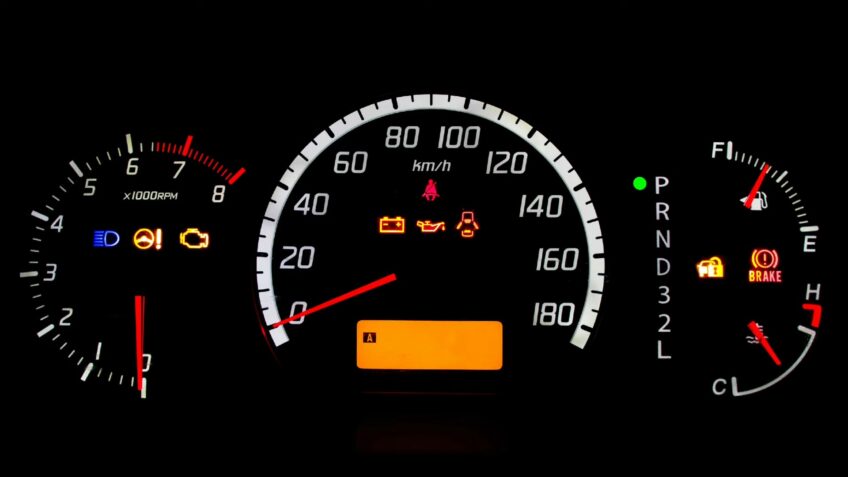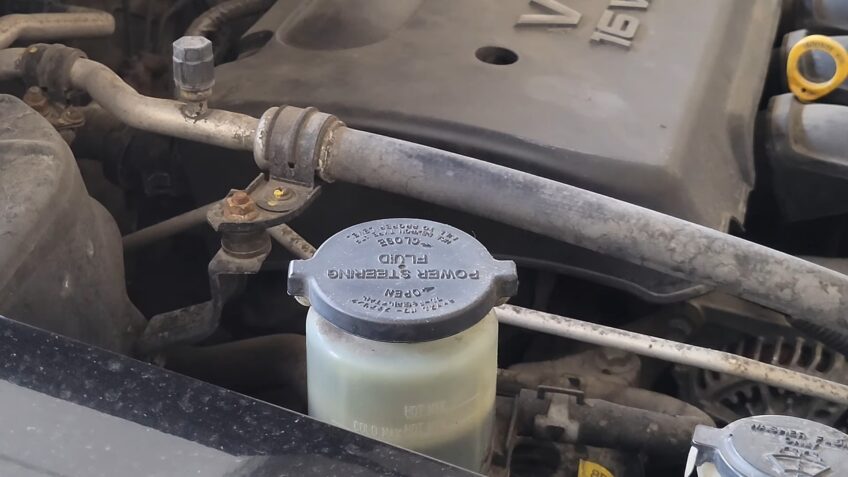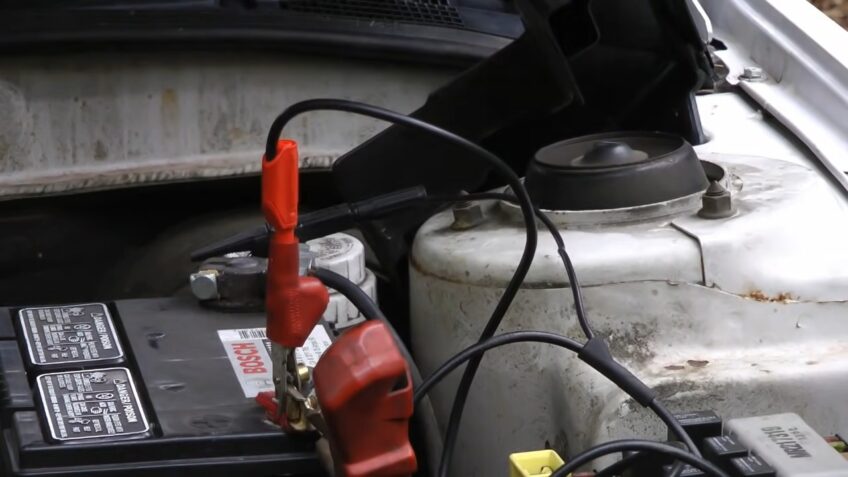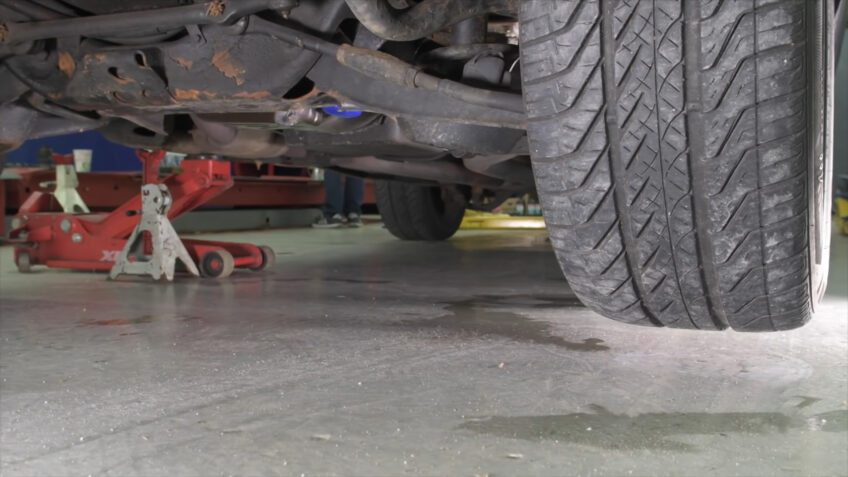Modern cars are equipped with advanced technologies that provide drivers with information about the condition of their vehicles. One such technology is the power steering system warning light, which alerts drivers to potential problems with their car’s power steering system.
The power steering system is an essential component of a vehicle that enables drivers to steer with ease and precision, especially at low speeds or when parking. However, like all other systems in a car, the power steering system can develop faults that require prompt attention to avoid more severe problems. In this article, we will discuss what the power steering system warning light means, what causes it to come on, and what you should do when you see it.
What is the Power Steering System Warning Light?

The power steering system warning light is a dashboard indicator that alerts the driver to a malfunction in the power steering system of the vehicle. This light usually appears when there is an issue with the pump, flow, or pressure. If this light appears on the dashboard, it’s important to diagnose and fix the problem as soon as possible to avoid further damage or safety issues.
It may appear when the engine is started and stay on, flash intermittently, or come on during the operation of the vehicle. When this warning appears on your dashboard, it means that an issue has developed within it that needs to be inspected by a qualified technician. The first step should be to check your vehicle’s onboard diagnostic system for any error codes stored in its memory.
These codes can provide invaluable information about what caused the issue and help you determine what needs to be done in order to resolve it. It is safest to have a qualified technician address any required repairs as they will have access to specialized tools and automotive-grade parts necessary for the proper maintenance of your vehicle’s power steering systems.
Causes of the Warning Light
It can indicate a variety of issues. These can range from a fault in the power steering system, to a loose connection in the system, to low levels of fluid. There can be a number of causes for the warning light and it is important to diagnose the exact cause before taking any action. In this section, we will look at possible causes that could trigger the power steering system warning light.
Low Fluid Levels

A low power steering fluid level is a common cause of the warning light coming on. It helps your vehicle to steer more easily and keeps the system lubricated and running smoothly. If there is an issue with the power-steering pressure, it might be indicative of a low fluid level. It can also be caused by other issues, like a leak in the system or an obstruction.
Leaks in the System
An underlying cause is a leakage in the fluid-filled hydraulic lines that make up the system. The leaks can be caused by worn seals, old lines, or a fault with the pump. Leaks can happen anywhere in the power steering system, and you’ll typically know about it right away.
The most common symptom of a power steering leak is low levels of steering fluid in the reservoir. As it leaks out, its ability to reduce friction within the system deteriorates and will eventually lead to a complete lack of proper resistance when turning your vehicle’s wheels – usually indicated by this light turning on.
Electrical Problems

When the light appears on the dashboard of your vehicle, it usually means there is an electrical problem with the system. This could be due to a variety of issues, including an incorrect wiring connection or not enough current being supplied to the power steering system. It can also indicate an issue with one of the fuses in the system or a defective control module.
The warning light may also illuminate if there is a debris buildup in any component, such as a clogged power steering fluid filter in older vehicles. If this occurs, try cleaning or replacing parts for troubleshooting. If issues still remain, it may be best to seek professional help from a certified mechanic or dealership’s service department to avoid causing further damage.
Faulty Components
One of the most common causes is faulty components within the system. When this occurs, there can be a decrease in fluid pressure or fluid temperature, leading to a decrease in overall power steering performance. It may also cause a noticeable drop in vehicle handling and stability when turning. Another potential issue is with the power pump itself, which can fail and cause the light to come on.
This can happen when there is contamination within the fluid; wear and tear on certain components; or the belt that drives the pump wears from use or slips off its pulleys. When these issues occur, it’s best to have an expert inspect your car for repairs and confirm whether any parts need replacing.
It’s also possible that something as simple as low power steering fluid levels can cause your warning light to come on. Proper maintenance of your power steering system is key – so make sure you check all its components regularly, including old hoses for cracks and proper belt tension for each pulley connection point between your pump motor and other devices like cooler compressors or fans.
Regularly checking fluid levels and replacing dirty fluids is also important for keeping your power steering system working properly.
How to Check for Power Steering System Problems
It is important to check for underlying power steering system problems. This is because the warning typically means that this system is malfunctioning. In this section, we will discuss what steps you should take to diagnose and repair the issue.
Checking the Fluid Levels
Once you have identified that a power steering system issue is occurring, start by inspecting the fluid levels. It helps to provide the hydraulic power for the system and any dip in pressure can lead to serious consequences.
Checking and maintaining your fluid levels is easy and can be done at home with some basic tools. To begin, locate your reservoir, which should have a cap identified by a hydro symbol on top, referencing its power steering fluid capacity. Depending on the type of vehicle you drive, you may need to remove some plastic covers in order to access the cap.
Once exposed, check the level of the fluid by unscrewing the cap or dipstick. If it is lower than indicated on your reservoir’s “Min” line then this could be an indication of a potential problem like a leak or worn-out pump.
Be sure to add more before continuing with further inspection. When inspecting keep an eye out for discoloration or any contaminants like metallic shavings caused by worn steering components. If it has broken down over time and become too thick or gritty to drain properly then it may need complete replacement as soon as possible for optimal performance in your power steering system.
Checking for Leaks

These leaks occur whn there is a broken hose, cracked reservoir, or cracked seals. If the power steering warning light turns on, it is important to check the system thoroughly to rule out any problems. Leaks will often appear as damp spots near the base of your power steering pump or along power steering hoses that are generally located near your vehicle’s front wheels.
You may also find them in areas close to the radiator or transmission. If you can see a small amount of fluid on the ground, dip your finger into it and smell it — if it smells like oil, then you most likely have a leak somewhere in your system. To determine where exactly these leaks are coming from, you should start by visually inspecting all hoses and other rubber components for cracking, signs of wear and tear, or breaks in their continuity.
Make sure to get up under the vehicle too; some leaks can only be noticed from below as they may be traveling through various parts before emerging onto the ground surface.
Additionally, take a look at any clamp fixtures and make sure they are not loose as this could indicate that a hose has come loose from its fixture post and is now leaking fluid. Finally, check your oil level regularly as this can sometimes indicate an issue with head gaskets, which could cause contaminated fluid levels in your power steering system.
Checking for Electrical Problems
Start by inspecting wires that may be exposed and finding those that are running near hot exhaust systems. Clean any dirt or clogged pathways and replace damaged wires, connectors, or terminals. Additionally, check any fuses connected to the power steering in your vehicle’s interior. If none of these preventative measures address the issue you’re experiencing with your power steering, then check for specific problems in other areas such as:
- Pump pressure loss
- Low fluid levels
- Damaged pulleys
- Belt distortion and/or damage
- Excessively worn hoses
- Leaking hydraulic components
Checking for Faulty Components
In order to detect power steering system problems, you first need to check for faulty components. Begin by examining the associated belts or hoses that help move power steering fluid throughout the system. Look for any visible cracks, fraying, or tension irregularities between each belt or hose. Next, check all the caps and seals along the hoses and lines.
Make sure they are correctly attached and sealed properly. You will also want to perform a visual inspection of the power steering pump itself. If it appears rusty or otherwise damaged, it may be time to replace it entirely. Finally, examine your pulleys and center-link components which link up with the steering wheel in order to turn it in either direction.
If any of these pieces appear worn down or twisted in a noticeable way, then they may be causing power steering issues and should be replaced as soon as possible.
FAQs
How much does it cost to repair a power steering system?
The cost of repairing depends on the severity of the problem and the make and model of your car. Repairs can range from a simple fluid top-up to replacing the power steering pump, which can cost several hundred dollars.
How long does it take to repair a power steering system?
The time it takes to repair it depends on the severity of the problem and the availability of parts. It can take anywhere from a few hours to a few days.
Can a power steering system warning light come on if the car’s battery is low?
No, it is not related to the car’s battery. If the battery is low, it may cause the car to start and run poorly, but it won’t affect the system.
How can I prevent problems with my power steering system?
You can prevent problems with it by checking the fluid level regularly, having your car serviced regularly, and addressing any issues promptly.
Can I use any type of power steering fluid in my car?
No, always refer to your car’s owner’s manual or consult with a professional mechanic to determine the correct type of fluid for your car.
What should I do if I hear a whining noise when I turn the steering wheel?
If you hear a whining noise when you turn the steering wheel, it could be a sign of a problem with your power steering system. You should have your car inspected by a professional mechanic to identify the cause of the noise and address it promptly. Before you go, take a look at our latest article and learn how to reset check engine light on your Jeep!
Conclusion
Knowing what the power steering system warning light means can help you diagnose and resolve any issues with your car’s power steering system quickly and efficiently. If the light is on, and the problem persists or worsens, it may be necessary to take your vehicle to a shop for further diagnosis.
Regular maintenance of your engine, emissions system and other components in your car will help you avoid costly repairs due to neglected upkeep. Make sure to contact an experienced auto repair technician if further service is necessary.

